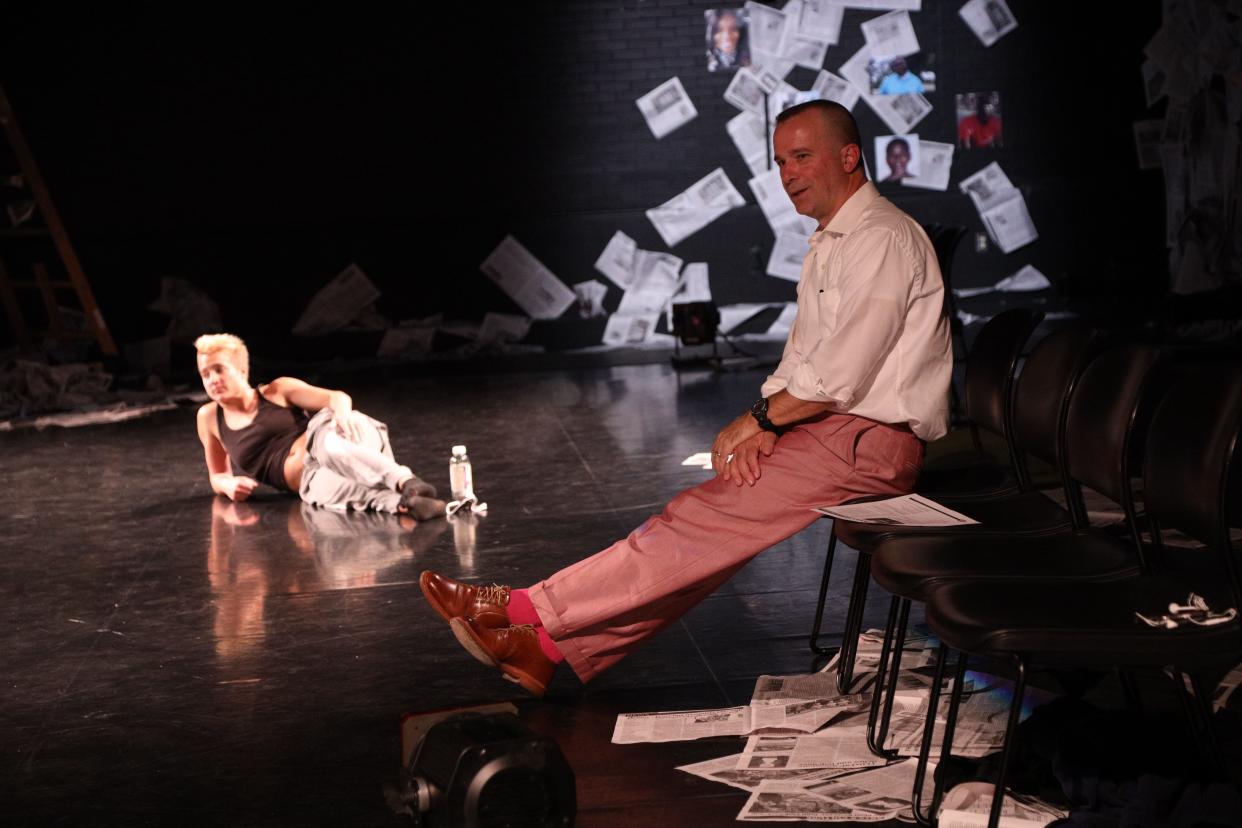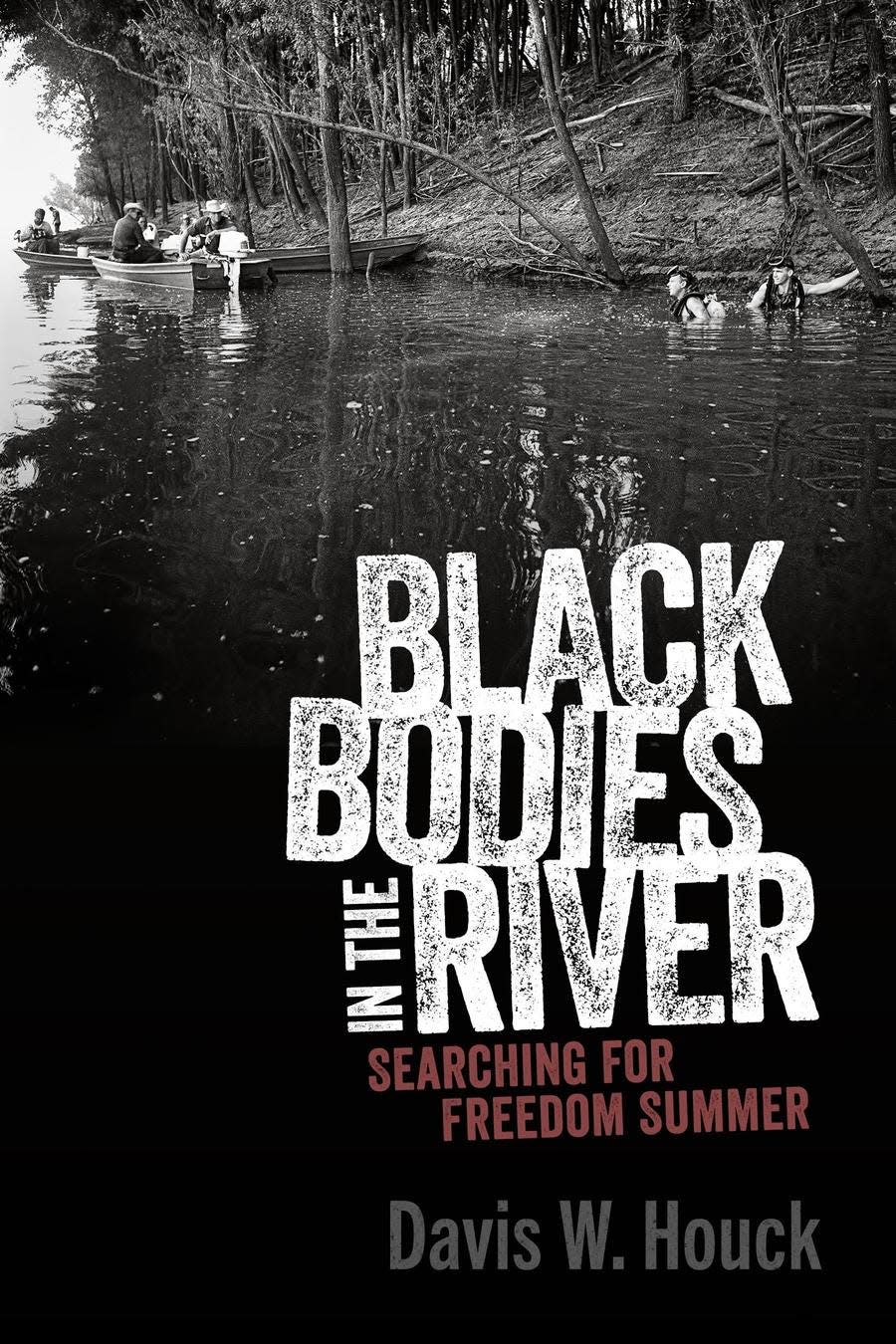FSU prof Davis Houck dives into facts, rhetoric in new book, 'Black Bodies in the River'

A book called "Black Bodies in the River." The study of rhetoric. And a professor who wants to grow the perfect lemon. What on earth do these have in common?
First, there is Davis Houck — with a Ph.D. at the end of his name. Houck is a number of things: He is a golfer. He likes growing pretty roses. He thinks Asian food is cool. And he would love to create the perfect Meyers lemon.
Oh, and he also likes exploring how people communicate; what’s the real message within their message.
He likes seeking out truth in a time when that is often harder to find than ever.
Houck’s newest book was published in June, "Black Bodies in the River, Searching for Freedom Summer" (University Press of Mississippi).

Houck is a professor of rhetoric, in fact, the Fannie Lou Hamer Professor of Rhetorical Studies at Florida State University. (What exactly is “rhetoric” you may be mumbling to yourself by now.)
For Houck, his mission is to answer that and other questions for his FSU students by providing them with the ability to assess the incoming waves of verbiage flowing through social media, television, radio, podcasts, election ads, pronouncements of important people, and even their peers as to the credibility and goal of what is communicated.
In other words, what is the true intent of the message?
Examining the message
To date, the examination of messages and agendas, of the power of words and actions to sway and influence people has led Houck to write 12 books, all exploring why and how people come to believe what they do.
In "The Rhetoric of Disability," FDR’s explicit hiding of his polio disability, which he believed people would associate with weakness, and his later use of soaring speeches and fireside chats that were meticulously crafted to inspire and assure are examples of rhetoric to convince.
In "Rhetoric as Currency," Roosevelt’s messages on the economy of the Depression were expressed as vitality and action rather than Hoover’s perceived mere optimism. It seemed to have worked.
Houck, a rabid golfer who wistfully stares after Lamborghinis, is also a sought-after professor who mentions Aristotle and Plato in conversation like neighbors he’s chatted with earlier in the day.
“Logos (which appeals to a sense of reason) Ethos, (impressing listeners with the speaker’s authority and trustworthiness) and Pathos, (which taps into an audience’s emotions) are parts of the rhetorical triangle which can be used to sway an audience to a certain point of view.” Houck shoves his hands in his pockets and isn’t willing to say that the use of these “techniques” is manipulation per se, but rather calls them “strategies” calculated to bring a listener over to one side.
Social media, untruths and research
He says that the trick is for the listener or consumer of information to be aware of hidden messages and outright untruths. “It’s hard to survive social media attacks or skewing of facts without editors,” he says. “We have to vet our own sources as much as possible… navigating uncertainty all the way.”
Which leads us to Davis Houck’s newest book, "Black Bodies in the River, Searching for Freedom Summer."
Houck had already written about the death of Emmett Till, researching the way journalists expressed and shaped public opinion in the aftermath of the 1955 slaying.
This time he turns his attention to deaths in the Mississippi Summer Project and the reshaping of the story.
In 1964, during a period when Northern Civil Rights activists came South to help with voter registration, two Jewish and one African American man, Andrew Goodman, James Chaney, and Michael Schwerner, were murdered by the Ku Klux Klan in Philadelphia, Mississippi.
What interested Davis Houck was how the story later evolved.
Examining 'Black Bodies' narrative
With an eye that neither accepts nor denies, in "Black Bodies in the River," Houck sets out as a scholar and an historian to examine how the message of racism was bolstered by reports of the discovery of first “two,” then “five,” followed by “eight,” and now, Houck says, “two dozen Black bodies” reported as found in Mississippi’s swamps and rivers.
Filmmakers, activists, journalists and scholars have repeated the narrative of these discoveries.
But he asks, were such bodies really found? And why has the claim only grown over the decades?
What, he asks, is the rhetorical work the “Black Bodies” claim hopes to do and with what audiences?
It would be interesting to peek into the mind of Houck as he tends to his roses and fantasizes about the perfect Meyers lemon.
But just as fascinating would be discovering the messages within messages — like the narrative of proliferating African American bodies — those often powerful calls to action we don’t know we’ve heard — but the way rhetoric propels our lives.
Marina Brown can be contacted at: mcdb100@comcast.
Never miss a story: Subscribe to the Tallahassee Democrat using the link at the top of the page.
This article originally appeared on Tallahassee Democrat: FSU prof Davis Houck makes rhetorical search of facts in 'Black Bodies

